Yu Darvish is Tweaking His Mechanics to Try and Escape His Early-Season Struggles

The collective hand-wringing over Yu Darvish in Chicago is almost deafening. You know that awful noise when two pieces of Styrofoam come in contact with one another? It’s basically the figurative version of that literal noise. Of course, it’s mostly coming from people who don’t matter. Writers with hot takes to file, radio show callers and others of that ilk. As little as their input means, it would be encouraging to see Darvish get them off his back as quickly as possible.
Darvish rose above that din to make his return from the DL, where he landed because of the flu and an artful use of the 10-day designation by the Cubs, earlier this week against the Braves. He left the game after four innings and 61 pitches because of cramping in his right leg, but both he and Joe Maddon insisted after the game it wasn’t a big deal. Darvish was dehydrated pitching in the Atlanta heat after not training for the better part of his DL stint, and Maddon thought discretion the better part of valor.
What’s more important is that Darvish resembled the dominant ace we know him to be, striking out five in four innings and allowing one run on a solo homer by Ender Inciarte. He got 10 whiffs, 16.4% of his total pitches. His whiff rate entering the start was 9.7%. This seems like a good time to mention that the Braves are ranked first in offensive fWAR, second in batting average, first in OBP, and third in slugging, with the second-lowest strikeout and whiff rates in the league. Don’t overlook the pitch count, either; getting through four innings with just 61 pitches signals a return to a more efficient pitcher.
Upon a deeper examination of Darvish’s outing against the Braves, two developments jump out. First, Darvish did not throw one two-seamer. Nary a stray sinker among Darvish’s 61 pitches against the Braves. Heading into the game, his two-seamer had a usage rate of 23.2%, third highest in his arsenal behind the four-seamer and slider. The other is a slight change in release point that should not go overlooked.
First, the two-seamer. Hitters knocked Darvish around on the pitch over his first six starts, totaling a .296 batting average and .556 slugging percentage against it. At a time when hitters pray at the launch angle altar, pitchers are sacrificing the two-seamer. Darvish’s first six starts illustrate the problem with the pitch in the modern game.
Below are two zone profiles, courtesy of Brooks Baseball. The first shows Darvish’s two-seamer location this season, and the second is slugging percentage allowed on the offering by location.
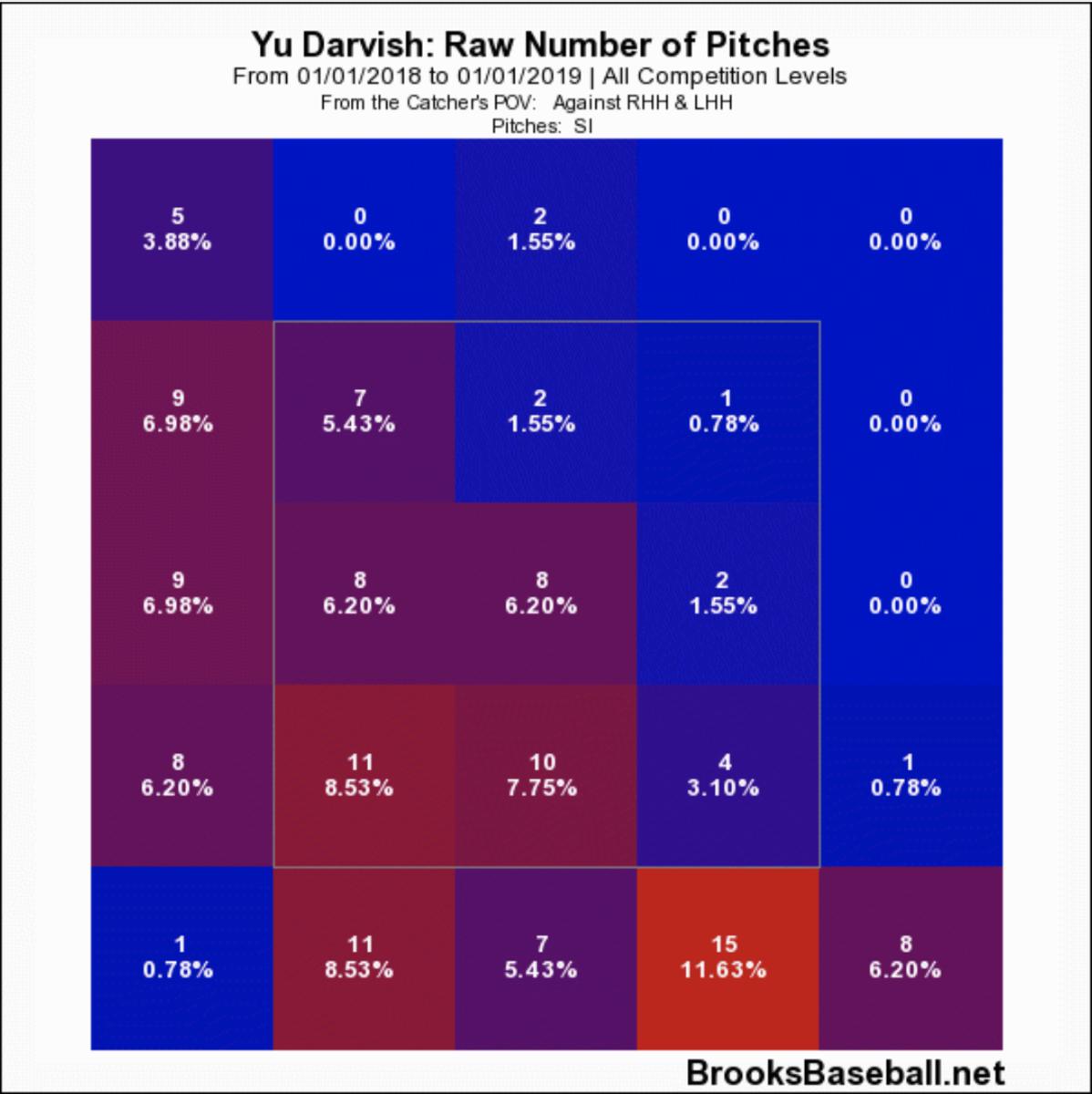
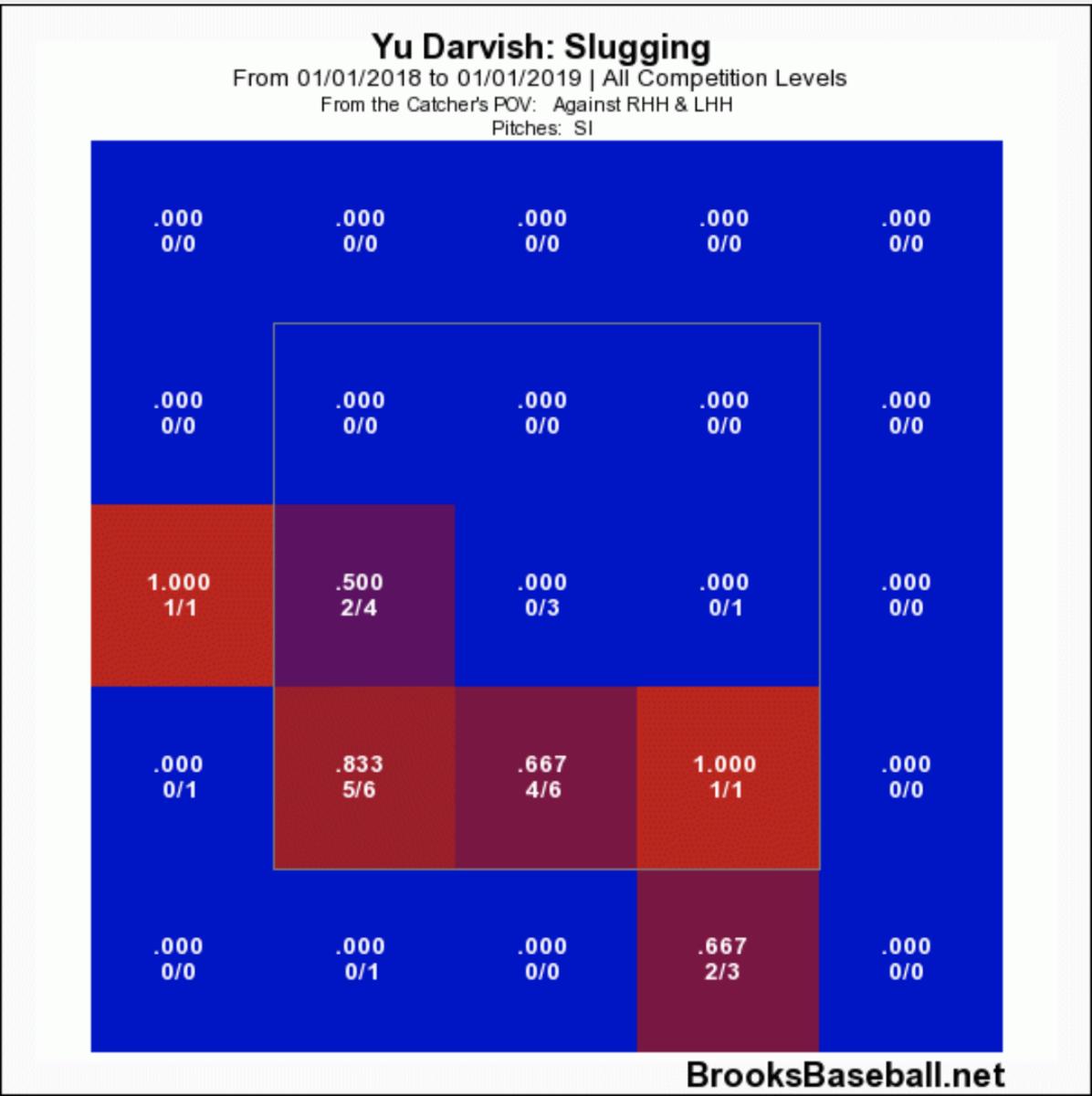
To be fair to the typical two-seamer, Darvish has not had much of a feel for it. Too many of those are getting too much of the plate, and it’s a miracle that he has yet to give up anything on his middle-middle two-seamers. Still, look at the slugging percentages on two-seamers down in the zone. When hitters are prizing lift over everything else, fastballs at the bottom of the zone are a pitcher’s kryptonite. As good as Darvish is, he’s no different from almost every other pitcher in that regard.
Darvish leaned heavily on his four-seamer and slider in his return from the DL, with those two offerings accounting for 52 of his 61 pitches. Inciarte’s homer came against the four-seamer, but both pitches were otherwise effective. Darvish got five whiffs with the slider, including two of his strike threes. Hitters went 1-for-5 against it when putting it in play, and the one hit was a bunt single by Inciarte. Darvish’s final pitch of the night was this filthy slider to fan Jose Bautista
Darvish’s two-seamer isn’t going to have a 0% usage rate the rest of the season, and it’s entirely possible he wanted to simplify his repertoire in his first game back from the DL. Given what’s happening across the league, however, not to mention his own struggles with the pitch this year, it’s something that bears monitoring.
Now, let’s move on to the release point. First, thanks to Statcast, we can plot exactly where Darvish, and every pitcher for that matter, releases his pitches. The first chart below shows Darvish’s release points for his first six starts of the season, and the second one shows release points in his outing against the Braves.
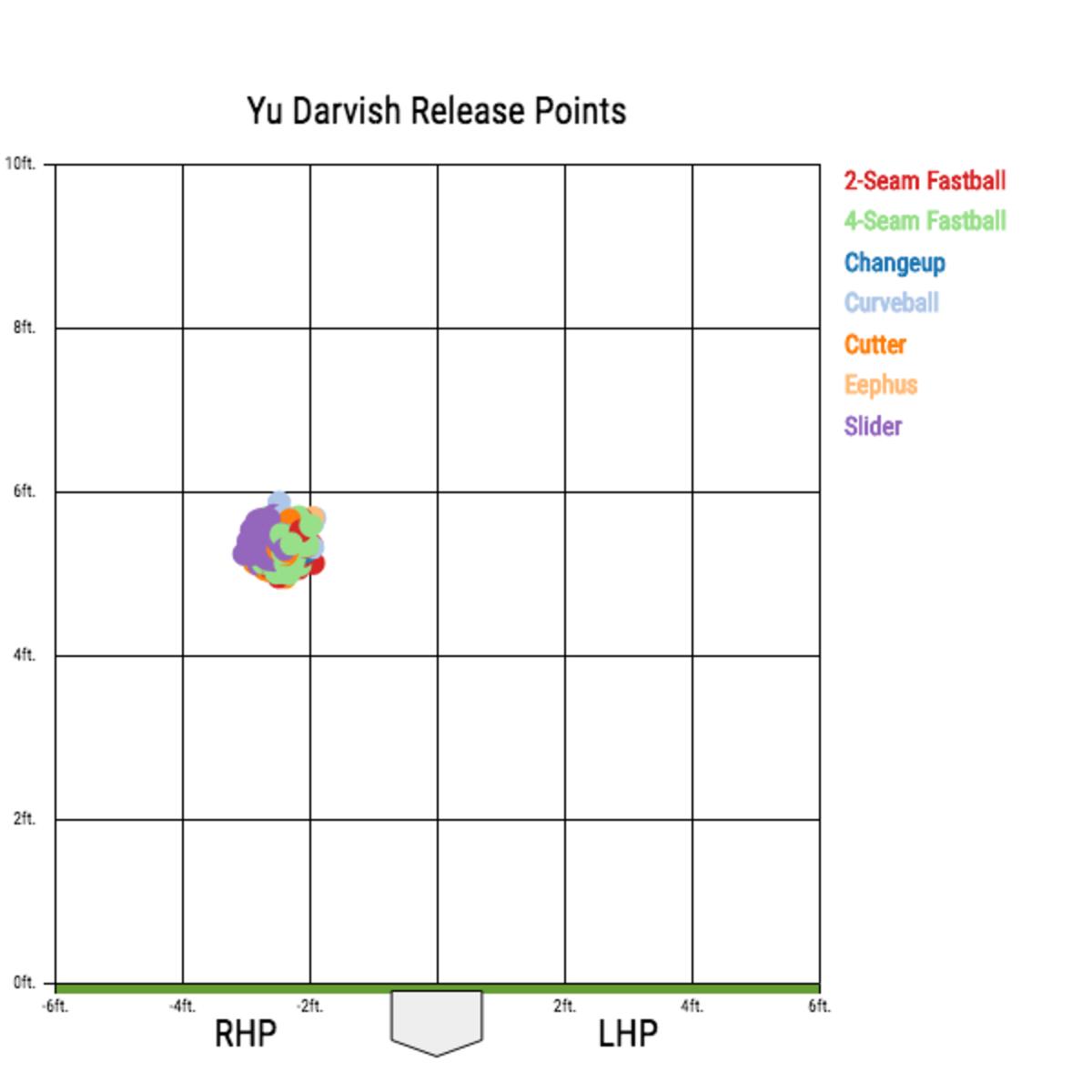
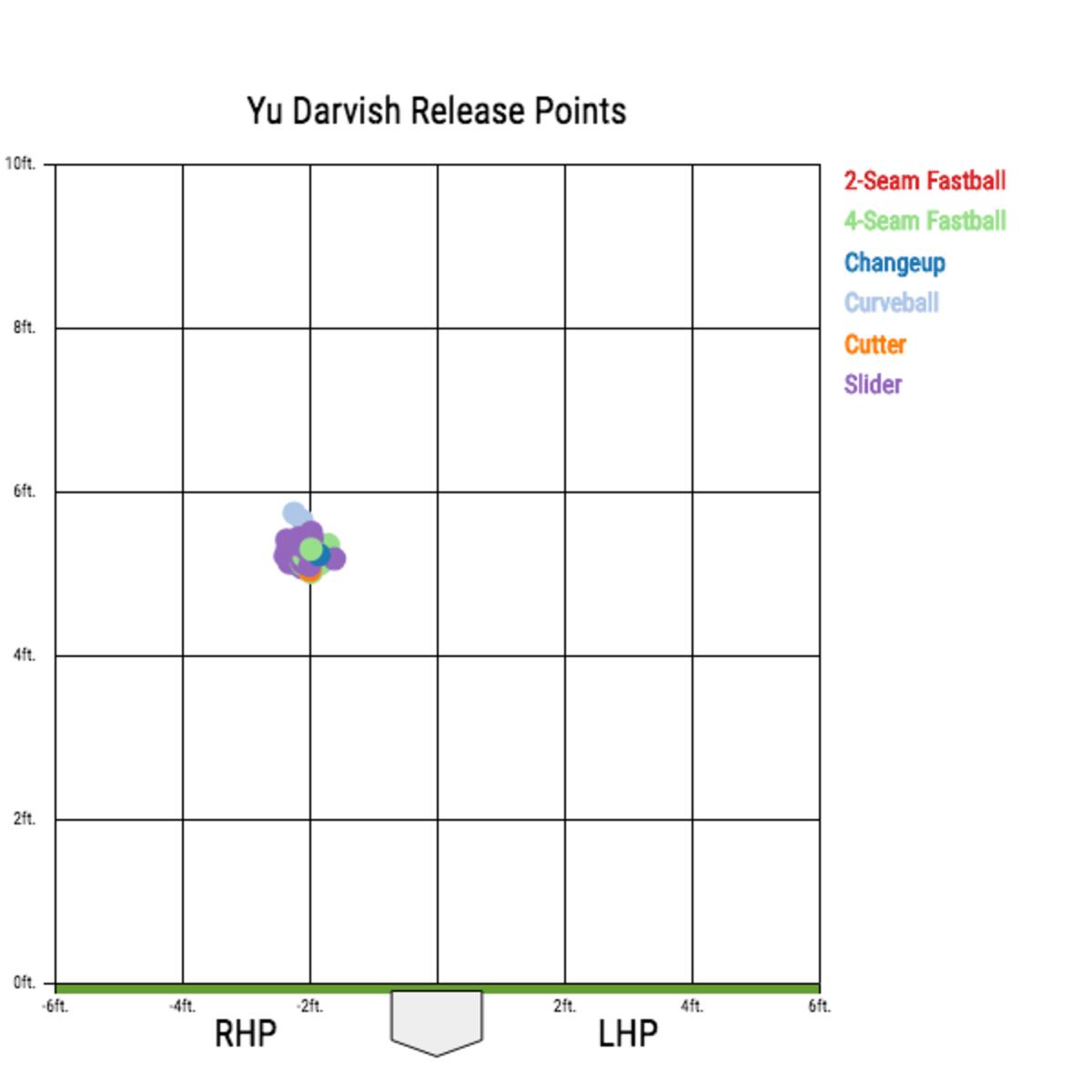
That may not seem like a big difference, but it is. Darvish’s release point in his return from the DL was much closer to his body than it had been previously this season. We can see what it looks like in actual human form with the following screenshots. One is from his last start before hitting the DL against the Rockies, and the other is from his return.
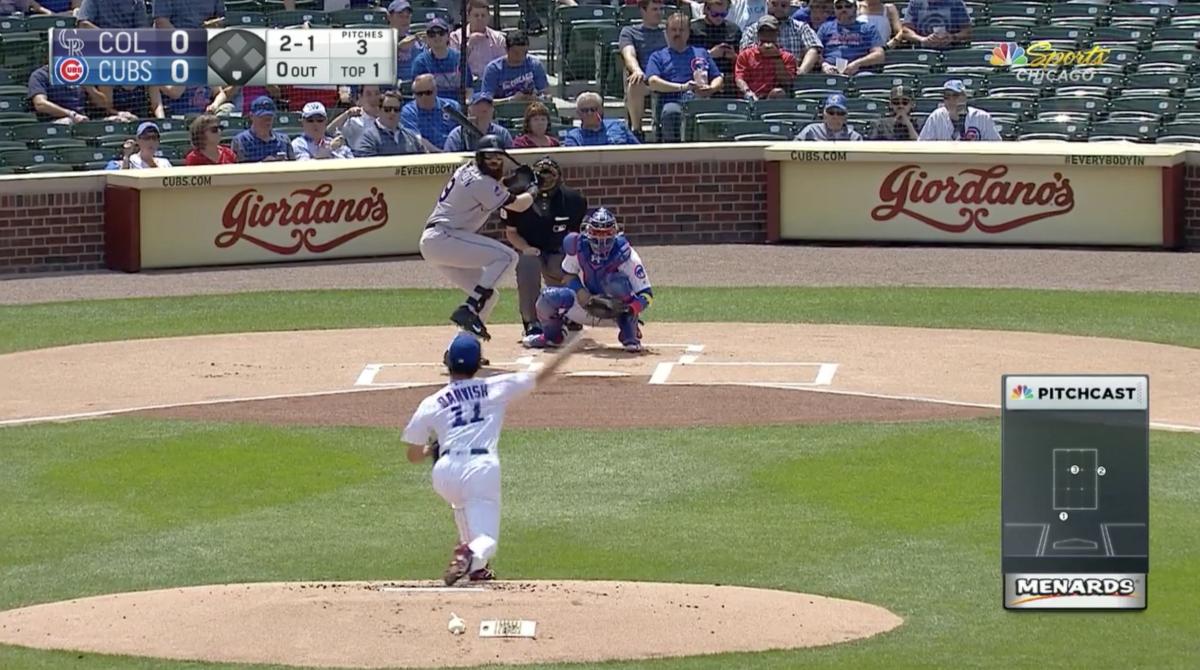
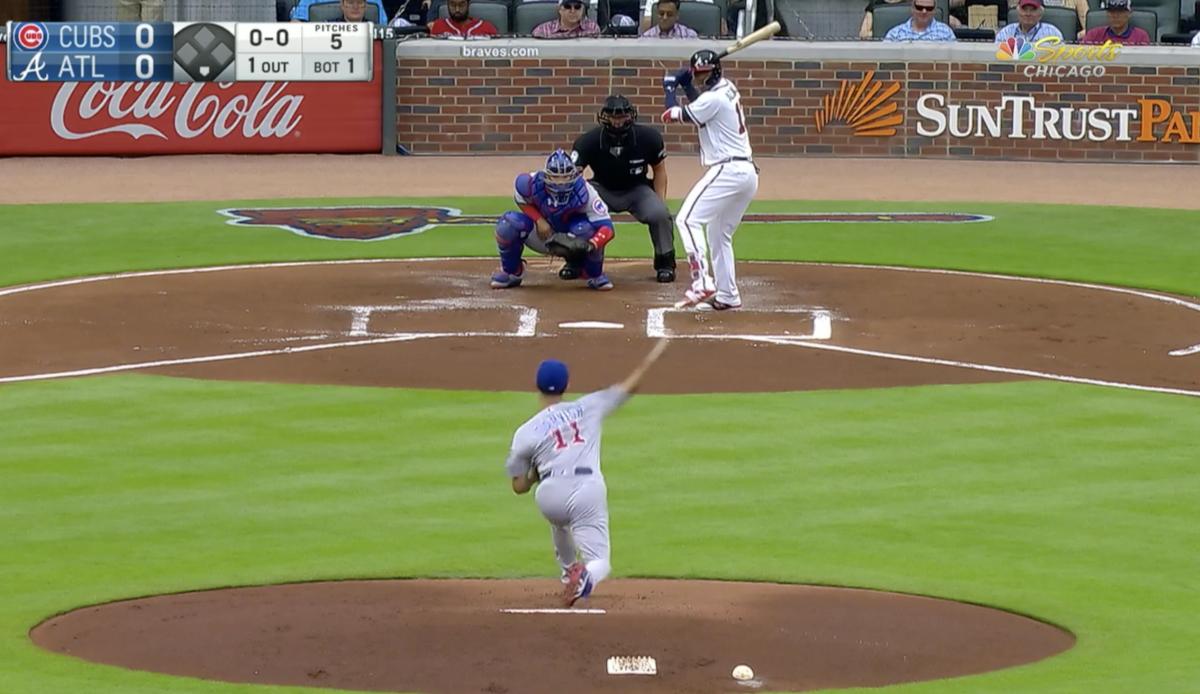
See how his arm is much flatter at the time of release against the Rockies than it is against the Braves, with his elbow basically at shoulder height? He was coming much more over the top in his return from the DL, even on his slider, an offering where a pitcher’s arm is naturally going to flatten out a bit. The screenshots below are both of sliders, and the difference in arm slot and release point is clear to see.
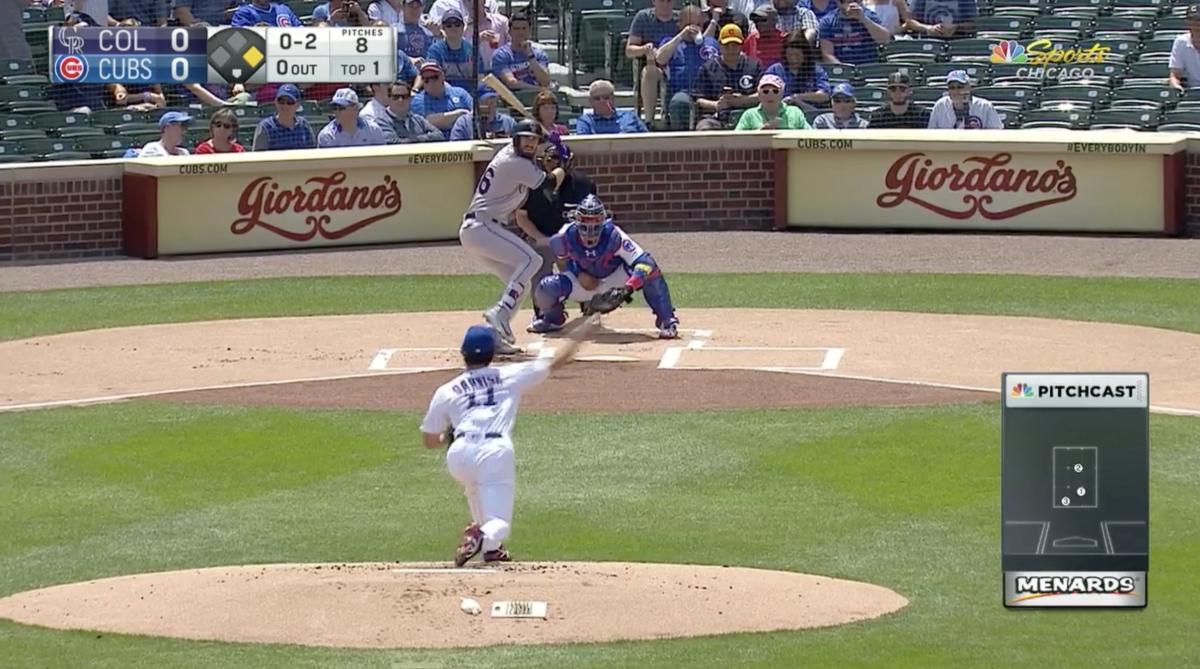
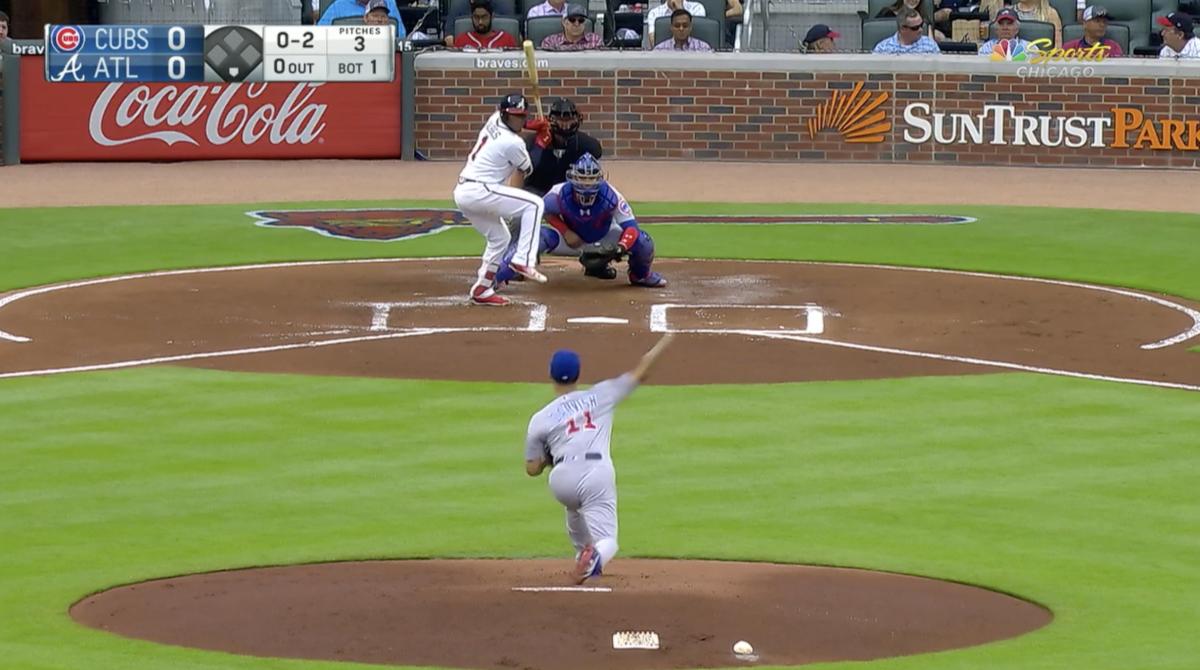
For what it’s worth, Darvish’s release points against the Braves most resemble where he was in 2013, which could be significant for two reasons. First, 2013 was the best season of his career. He made a career-high 32 starts, totaling a 2.83 ERA, 3.25 FIP, 1.07 WHIP and 277 strikeouts in 209 2/3 innings, finishing second in Cy Young voting to Max Scherzer. Second, it was the year in which he set his career low in two-seamer usage rate, throwing it just 8.6% of the time.
In sum, the facts are these: Darvish shut down one of the best offenses in the league in his first start back from the DL, and while he had to leave the game after just four innings, it was one of his most impressive performances of the season. In that start, he ditched a problematic two-seamer, threw a higher rate of sliders than in any previous outing with the Cubs, and substantively changed his release point. We can’t yet say with certainty that these adjustments serve as a course correction for the righty, but there is definitely some smoke here. His next few trips to the mound should reveal if there’s also fire.
